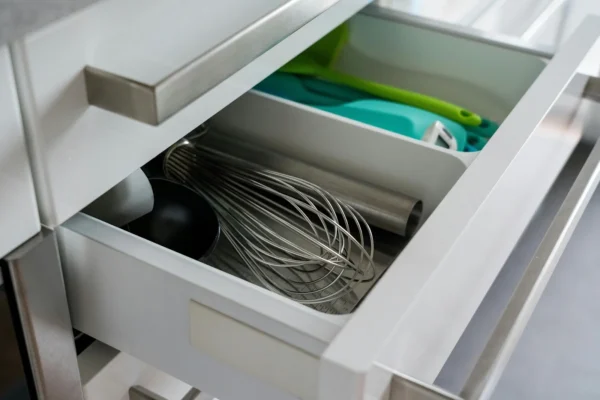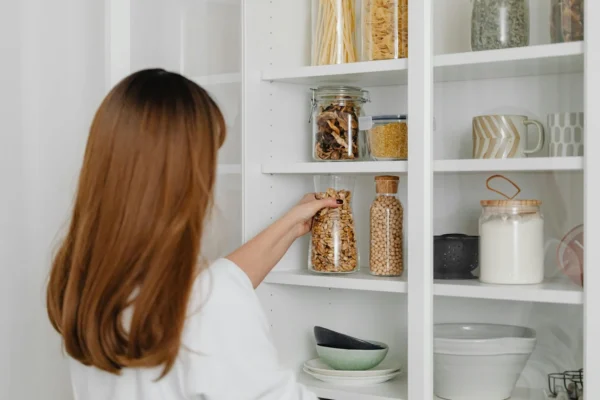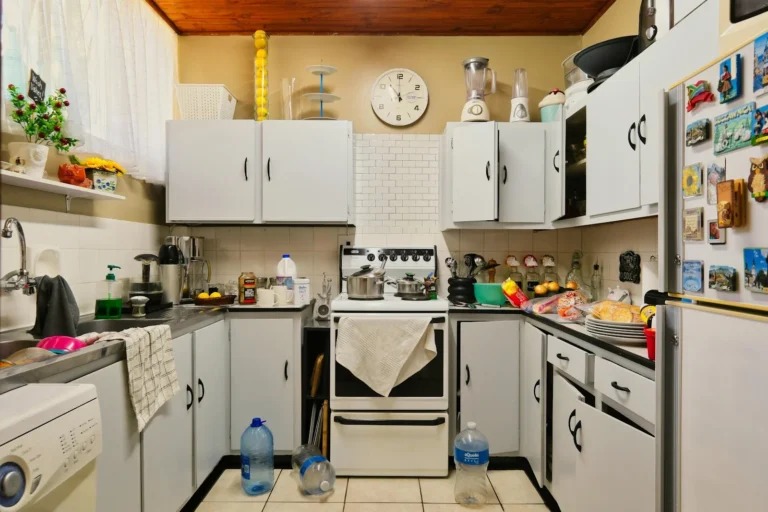In a busy home, the kitchen quickly becomes command central—and clutter catches up fast. Sippy cups, school papers, half-used spice jars—it all adds up. But transforming the chaos into a clean, functional space doesn’t have to be overwhelming. With the right approach and a handful of effective decluttering tips, you can get back to a kitchen that works for your family, not against it.
Clear the Cabinets and Tame the Junk Drawer
Start your reset by emptying your upper cabinets and that overflowing junk drawer so you can see everything clearly. Toss chipped coffee mugs, mismatched plastic food containers, broken kitchen gadgets, and that ice cream maker you haven’t touched in years. Donate unused canned food and duplicates to a local food pantry, and keep only what you use regularly—like your go-to cutting board, dish towels, and water bottles. Use drawer dividers to sort cooking utensils and tools, group like items together, and designate a proper home for everything, freeing up valuable cabinet space and helping create a clutter-free kitchen. You can have your kids help out with this kid-friendly task.
Reclaim Your Counter Space with Daily Habits
Clearing off your kitchen counters instantly makes the space feel less chaotic. Keep only essentials like your coffee maker or coffee pot on the counter, while storing less-used appliances—such as toasters and blenders—neatly inside cabinets. To maintain a clutter-free kitchen, make it a nightly habit to wipe down counters and return items to their designated spots. Include your kids in this process by creating a simple, kid-friendly decluttering routine where they help put things away, making it easier to keep the kitchen organized and ready for the next meal.
Use Drawer Organizers to Keep Kitchen Tools and Cooking Utensils in Check

Messy kitchen drawers packed with cooking tools and food storage containers can slow you down. Invest in drawer organizers and dividers to save space and group items by purpose and usage, making it easier to find what you need. For example, keep wooden spoons and unused plastic cups together, You’ll likely uncover duplicate items or gadgets that have been collecting dust—donate or store at least a couple of them outside the kitchen. These small changes simplify how you cook meals and reduce stress during busy mornings or dinner rushes.
Maximize Storage Space with Smart Kitchen Cabinet Solutions
To maximize space inside your kitchen cabinets and cupboards, use shelf risers to stack plates and kitchen utensils or display your mug collection, and lazy Susans for hard-to-reach areas. Clear bins work great for food items and baking supplies, while pull-out bins near the kitchen sink can hold cleaning supplies or even food waste for composting. These organizing tools aren’t just helpful—they make a huge difference in keeping your kitchen functional, tidy, and easy to maintain long-term. The same organizing tools can also be applied when dealing with playroom clutter, helping to create a more functional and tidy space.
Organize Food Storage and Cleaning Supplies for A Clutter-Free Kitchen
Designate one area of your kitchen, like your kitchen cupboards, specifically for food storage. Label containers and group similar items—like pasta, grains, and cereals—together. Not only does this streamline grocery prep, but it also reduces food waste since you’ll know what you have on hand.
Don’t forget your cleaning supplies. Store them together—ideally under the kitchen sink—in a caddy or bin that’s easy to grab. By assigning zones for both food and cleaning tools, you’ll feel less overwhelmed by a cluttered kitchen.
Create Kitchen Zones to Make Organization Stick
Dividing your entire kitchen into zones based on activity—prep, cooking, baking, food storage, and cleaning—can transform the way your space works. Keep spices, cutting boards, and cooking utensils near the stove; store food storage containers and dry goods near the pantry area; and designate a drawer or cabinet just for kids’ water bottles and lunch containers. By assigning each item a zone, it becomes easier to return things to their proper place and prevent kitchen clutter from creeping back in.
Rotate and Refresh Kitchen Inventory Seasonally

As seasons change, take a moment to reassess what’s actually being used in your kitchen in your decluttering checklist. During your next spring cleaning session, rotate pantry staples and check expiration dates to avoid health risks. Move lesser-used kitchen gadgets to a different storage space. Decluttering kitchen cabinets in this way helps you consolidate duplicates, make room for all the things that serve your current routine, and even rediscover forgotten favorites like one or two recipes you haven’t made in a while. This refresh doesn’t take long, but this happy decluttering process can make a huge difference in making your life easier in the kitchen.

